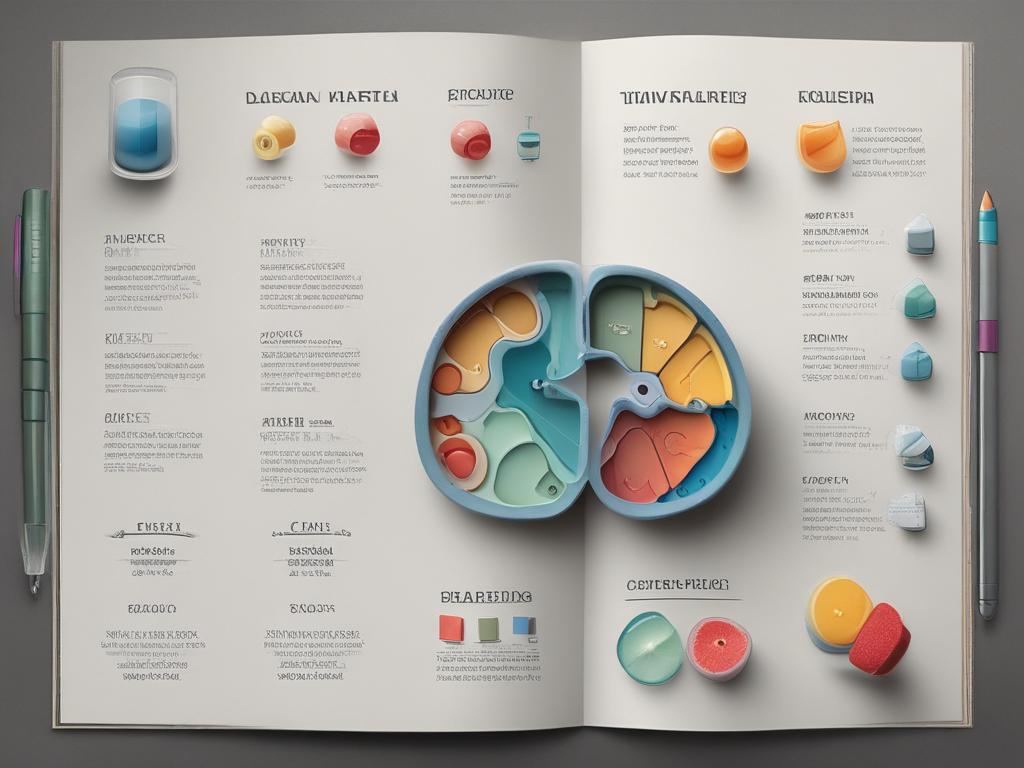
Diabetes is a complex and often misunderstood condition that affects millions of people worldwide. Understanding diabetes involves delving into its various types, symptoms, and potential complications. This comprehensive guide seeks to explore the intricacies of diabetes, empowering readers to recognize the early signs and understand the crucial differences between Type 1, Type 2, and other forms of the disease. As awareness and knowledge grow, so does the ability to manage this chronic condition effectively.
Effective management strategies are essential for those living with diabetes, allowing individuals to lead healthier, more fulfilling lives. By adopting practical lifestyle changes, maintaining a balanced diet, and embracing regular physical activity, people can take control of their health and mitigate the risks associated with diabetes. In this blog post, we will uncover valuable tips and insights to help you navigate the complexities of diabetes management, ensuring that you have the tools necessary to thrive in your journey toward optimal health.
Explore the complexities of diabetes: An overview of types and symptoms
Diabetes is a complex metabolic disorder that affects millions of individuals worldwide. It occurs when the body is unable to effectively use insulin, a hormone essential for converting glucose into energy. This inefficiency results in elevated blood sugar levels, leading to various health complications. Understanding the intricacies of diabetes begins with recognizing its primary types: Type 1, Type 2, and gestational diabetes. Each type presents unique challenges and requires different approaches to management. Additionally, being aware of the common symptoms—such as increased thirst, frequent urination, fatigue, and blurred vision—can contribute to early detection and prompt intervention.
Recognizing the symptoms of diabetes is crucial for effective management. For instance, individuals with Type 1 diabetes often experience sudden onset of symptoms, while those with Type 2 diabetes may notice gradual changes over time. As symptoms develop, they can severely impact daily life if left unaddressed. Therefore, understanding these complexities not only aids in personal awareness but also enhances conversations around diabetes, enabling individuals to seek medical advice and adopt preventive measures sooner. In the following sections, we will delve deeper into the various types of diabetes and explore effective management strategies to empower those living with this chronic condition.
Understanding the different types of diabetes: From Type 1 to Type 2 and beyond
Diabetes is not a one-size-fits-all condition; it encompasses various types, each with distinct characteristics and underlying causes. Type 1 diabetes, often diagnosed in childhood or adolescence, arises when the immune system mistakenly attacks the insulin-producing beta cells in the pancreas. This autoimmune response leads to a complete deficiency of insulin, rendering the body incapable of regulating blood sugar levels without external insulin administration. On the other hand, Type 2 diabetes typically develops in adulthood and results from insulin resistance combined with a gradual decline in insulin production. Weight gain, sedentary lifestyle, and genetic predisposition are key factors contributing to this prevalent form of diabetes, which makes understanding its nuances essential for effective management.
In addition to Type 1 and Type 2, other forms of diabetes exist, such as gestational diabetes, which occurs during pregnancy and usually resolves postpartum, but can increase the risk of developing Type 2 diabetes later in life. There are also rarer types, like monogenic diabetes, which stems from specific genetic mutations. Each type of diabetes presents unique challenges and demands tailored approaches for management. Identifying the type of diabetes is crucial, as it dictates treatment strategies and lifestyle adjustments. By understanding the spectrum of diabetes, individuals can empower themselves with knowledge that fosters better control, minimizes complications, and enhances their overall quality of life.
Effective management strategies for diabetes: Tips for a healthier lifestyle
Managing diabetes requires a proactive approach to lifestyle choices and daily routines. One of the most effective strategies involves adopting a balanced diet rich in whole foods, such as fruits, vegetables, lean proteins, and whole grains. Reducing the intake of processed foods, sugary snacks, and refined carbohydrates can help stabilize blood sugar levels and improve overall health. Furthermore, portion control plays a critical role in managing calorie intake. Individuals with diabetes should also monitor their carbohydrate consumption, as carbohydrates have the most significant impact on blood sugar levels. Utilizing food journals or apps can greatly assist in tracking dietary intake and understanding which foods affect blood glucose levels.
Physical activity is another key component of effective diabetes management. Engaging in regular exercise, such as walking, swimming, or cycling, helps to increase insulin sensitivity and maintain a healthy weight. Aim for at least 150 minutes of moderate-intensity aerobic exercise each week, along with strength training exercises to enhance muscle mass. Additionally, stress management techniques, such as mindfulness, yoga, or meditation, can significantly benefit individuals with diabetes. Stress can introduce fluctuations in blood sugar levels, so practicing relaxation techniques can contribute to better overall management. Together, these strategies create a holistic approach to living with diabetes, promoting both physical and mental well-being.